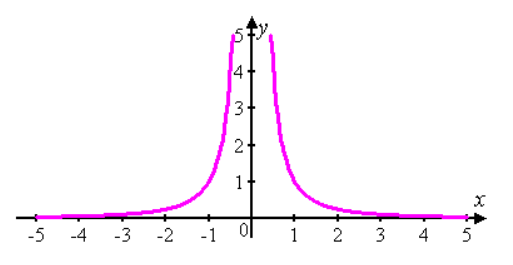
Concept explainers
(a)
To find: The comparison for the curves by the parametric equations and the whey in which they differ.
(a)
Explanation of Solution
Given:
The given parametric equation is
Calculation:
Consider the given equation is,
The variable y can take any of the real value for all the value of
The function
The value of
The graph for the parametric equations
The graph is shown in Figure 1

Figure 1
(b)
To find: The comparison for the curves by the parametric equations and the whey in which they differ.
(b)
Answer to Problem 36E
The required parametric curve is shown in Figure 2 and it is seen that the value of
Explanation of Solution
Given:
The given parametric equation is
Calculation:
The given parametric equation is,
For
From the given parametric equation it is observed that the value of
The diagram for the graph of the given parametric equation is shown below.
The graph for the given parametric equations is shown in Figure 2

Figure 2
(c)
To find: The comparison for the curves by the parametric equations and the whey in which they differ.
(c)
Answer to Problem 36E
The graph is shown in Figure 3 and it is same as the graph for first set of the parametric equations.
Explanation of Solution
Given:
The given parametric equation is
Calculation:
The given parametric equation is,
The variable
The curve lies in the first quadrant. This is clear from the parametric equations that value of
The graph for the given parametric equations is shown in Figure 3

Figure 3
The graph is same as the graph for first set of the parametric equations.
Chapter 1 Solutions
Single Variable Calculus: Concepts and Contexts, Enhanced Edition
 Calculus: Early TranscendentalsCalculusISBN:9781285741550Author:James StewartPublisher:Cengage Learning
Calculus: Early TranscendentalsCalculusISBN:9781285741550Author:James StewartPublisher:Cengage Learning Thomas' Calculus (14th Edition)CalculusISBN:9780134438986Author:Joel R. Hass, Christopher E. Heil, Maurice D. WeirPublisher:PEARSON
Thomas' Calculus (14th Edition)CalculusISBN:9780134438986Author:Joel R. Hass, Christopher E. Heil, Maurice D. WeirPublisher:PEARSON Calculus: Early Transcendentals (3rd Edition)CalculusISBN:9780134763644Author:William L. Briggs, Lyle Cochran, Bernard Gillett, Eric SchulzPublisher:PEARSON
Calculus: Early Transcendentals (3rd Edition)CalculusISBN:9780134763644Author:William L. Briggs, Lyle Cochran, Bernard Gillett, Eric SchulzPublisher:PEARSON Calculus: Early TranscendentalsCalculusISBN:9781319050740Author:Jon Rogawski, Colin Adams, Robert FranzosaPublisher:W. H. Freeman
Calculus: Early TranscendentalsCalculusISBN:9781319050740Author:Jon Rogawski, Colin Adams, Robert FranzosaPublisher:W. H. Freeman
 Calculus: Early Transcendental FunctionsCalculusISBN:9781337552516Author:Ron Larson, Bruce H. EdwardsPublisher:Cengage Learning
Calculus: Early Transcendental FunctionsCalculusISBN:9781337552516Author:Ron Larson, Bruce H. EdwardsPublisher:Cengage Learning





